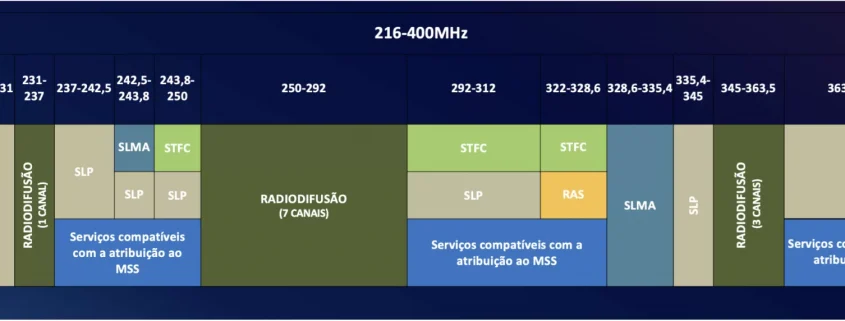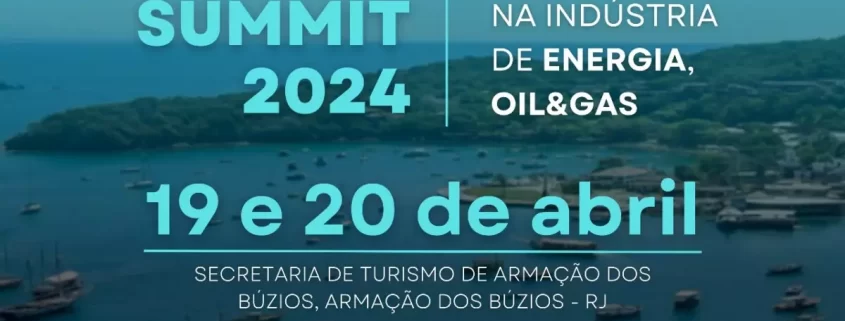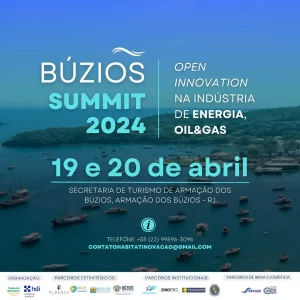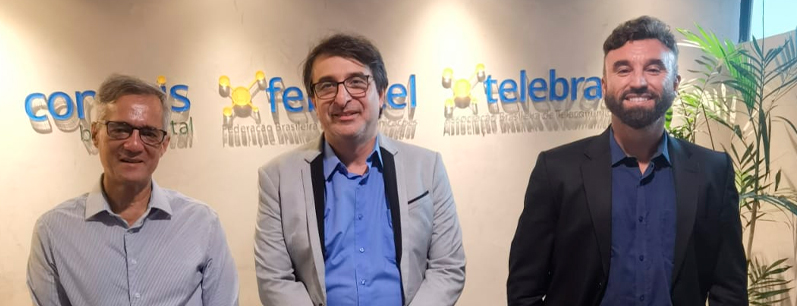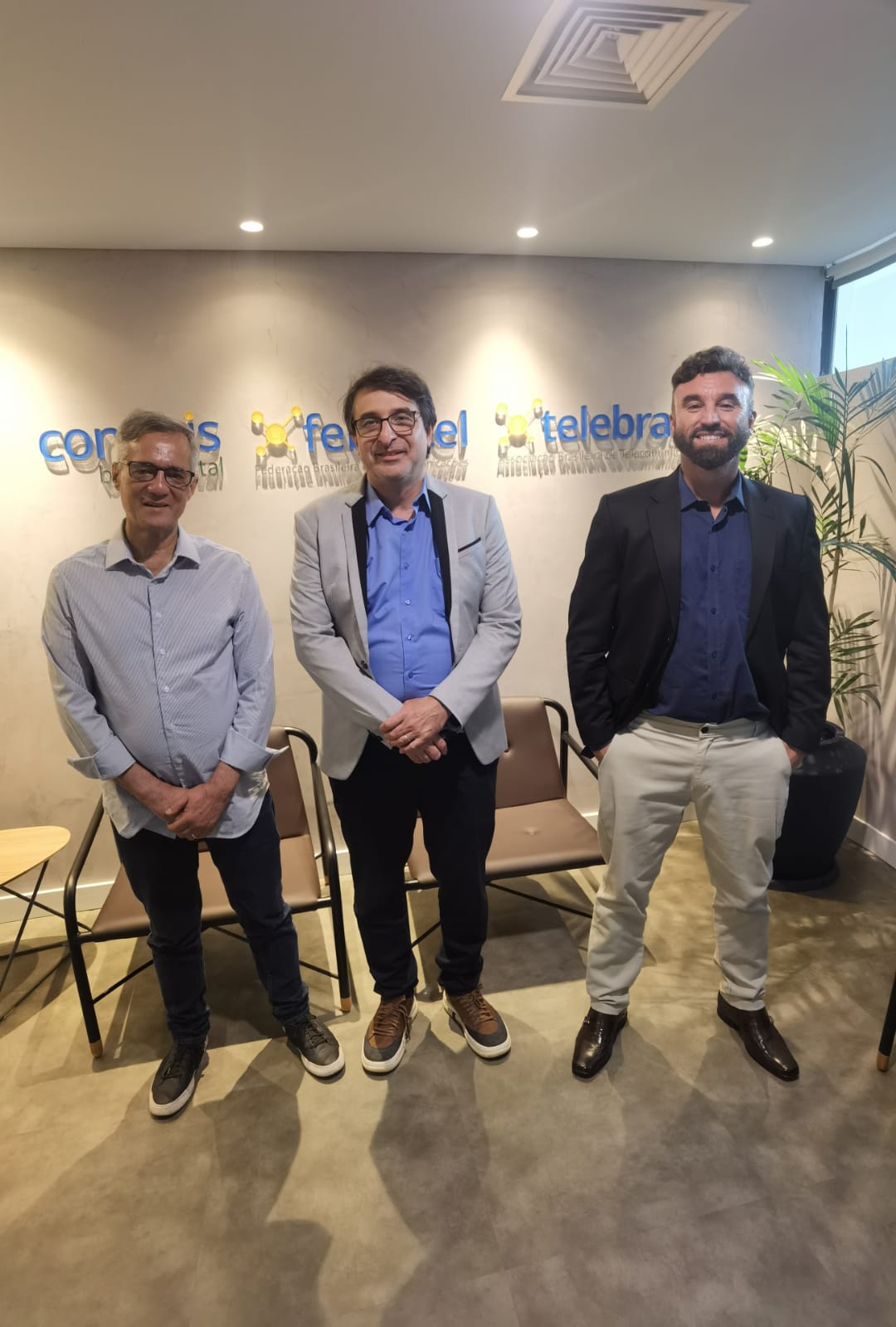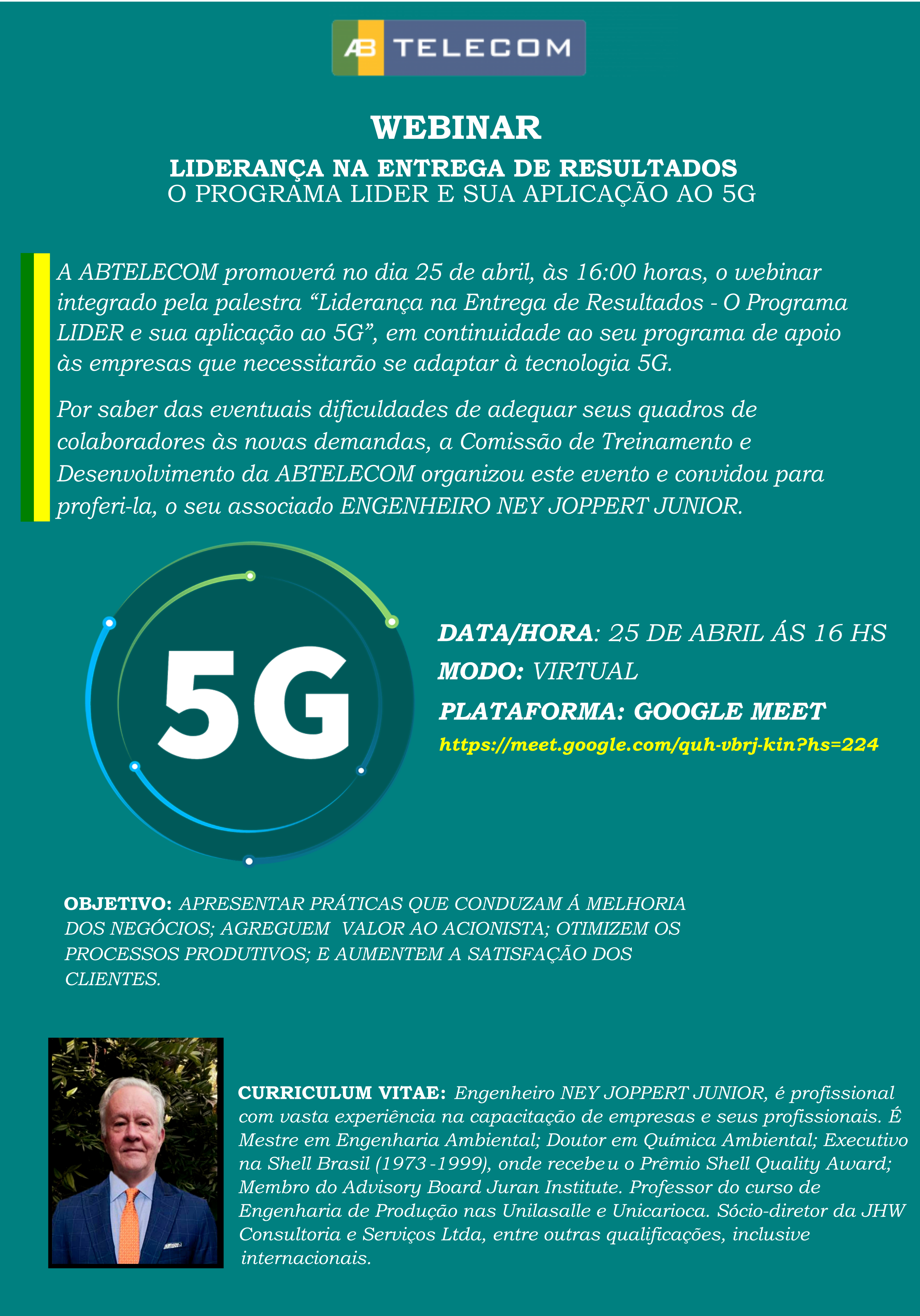Maio, o Mês das Telecomunicações: ABTELECOM promove lives comemorativas
O mês de maio tem um significado especial para os profissionais, estudantes e entusiastas da engenharia de telecomunicações. Comemoramos duas datas marcantes que valorizam o papel estratégico das telecomunicações no Brasil e no mundo: o Dia Nacional das Telecomunicações (5 de maio) e o Dia Mundial das Telecomunicações e da Sociedade da Informação (17 de maio).
Essas datas não são apenas simbólicas. Elas nos convidam a refletir sobre o impacto da conectividade, da inovação tecnológica e da transformação digital na vida da sociedade contemporânea. E, para fortalecer ainda mais essa reflexão, a ABTELECOM (Associação Brasileira de Telecomunicações) promoveu, neste mês de maio, duas lives especiais com especialistas renomados da área, marcando o início de uma nova tradição: todo dia 5 e 17 de maio, teremos eventos técnicos promovidos pela associação.
5 de Maio – Dia Nacional das Telecomunicações
Comemorado em 5 de maio, o Dia Nacional das Telecomunicações homenageia o legado do Marechal Cândido Rondon, patrono das comunicações no Brasil. Reconhecido por sua atuação pioneira na instalação de linhas telegráficas em regiões remotas do país, Rondon contribuiu de forma decisiva para a integração territorial e social do Brasil. A data celebra não apenas sua trajetória, mas também o papel essencial dos profissionais que atuam na construção e manutenção da infraestrutura que sustenta a sociedade digital moderna.
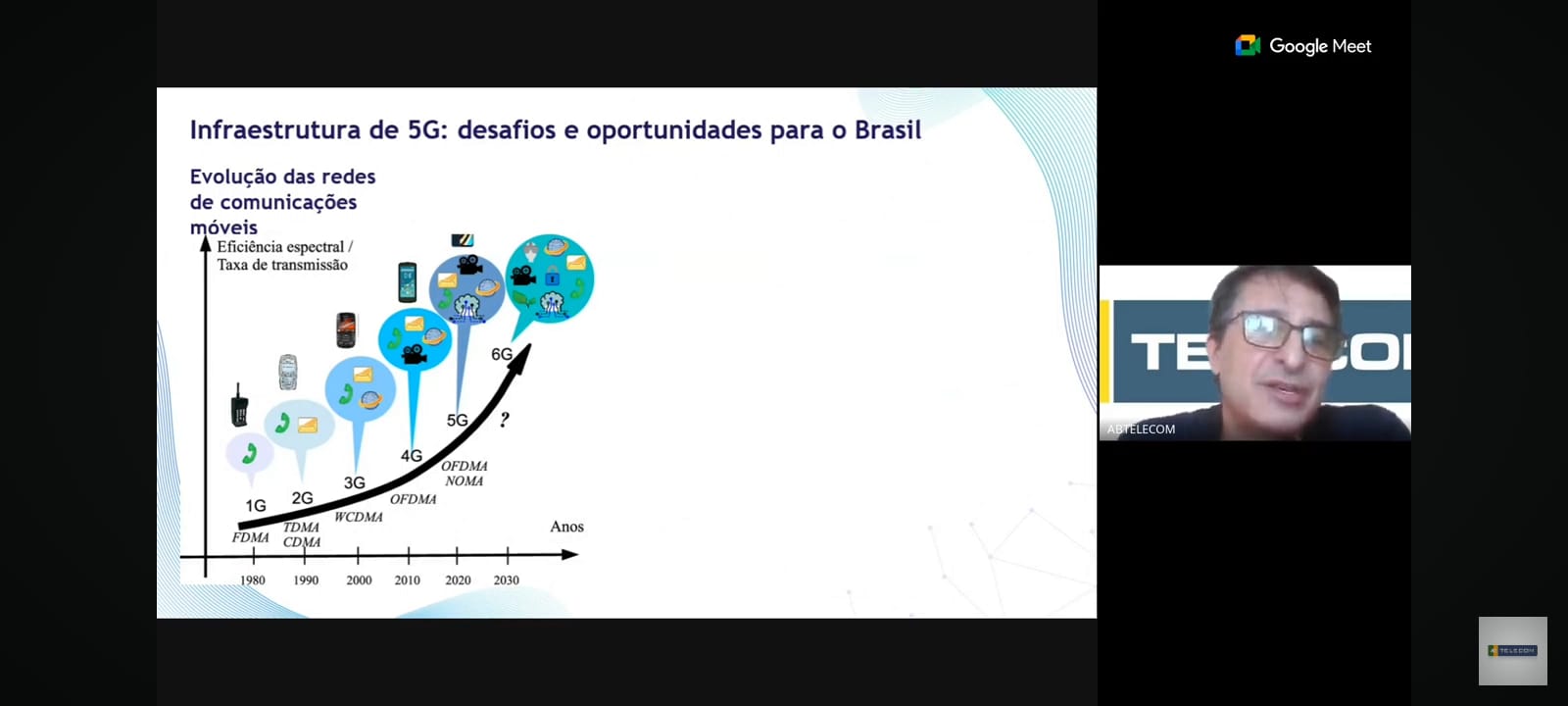
Para marcar essa data, a ABTELECOM promoveu uma live especial com o tema “Infraestrutura de 5G: Desafios e Oportunidades para o Brasil”, ministrada pelo Dr. Rogério Moreira Lima, Diretor de Inovação da associação. Engenheiro Eletricista formado pela UFMA, mestre pelo Instituto Militar de Engenharia (IME) e doutor em Engenharia Elétrica/Telecom pela PUC-Rio, o palestrante apresentou uma análise profunda sobre os caminhos e barreiras para a implantação do 5G no Brasil. Entre os temas abordados, destacaram-se a conectividade inteligente, a Internet das Coisas (IoT) e o futuro da infraestrutura digital no país, com foco nas transformações tecnológicas e sociais que o 5G poderá proporcionar.
17 de Maio – Dia Mundial das Telecomunicações e da Sociedade da Informação
Instituído pela União Internacional de Telecomunicações (UIT), o Dia Mundial das Telecomunicações e da Sociedade da Informação, celebrado em 17 de maio, tem como objetivo ampliar a conscientização sobre o papel das tecnologias da informação e comunicação (TICs) no desenvolvimento socioeconômico global. Essa data convida governos, instituições e a sociedade civil a refletirem sobre como a conectividade pode promover inclusão, crescimento e inovação.
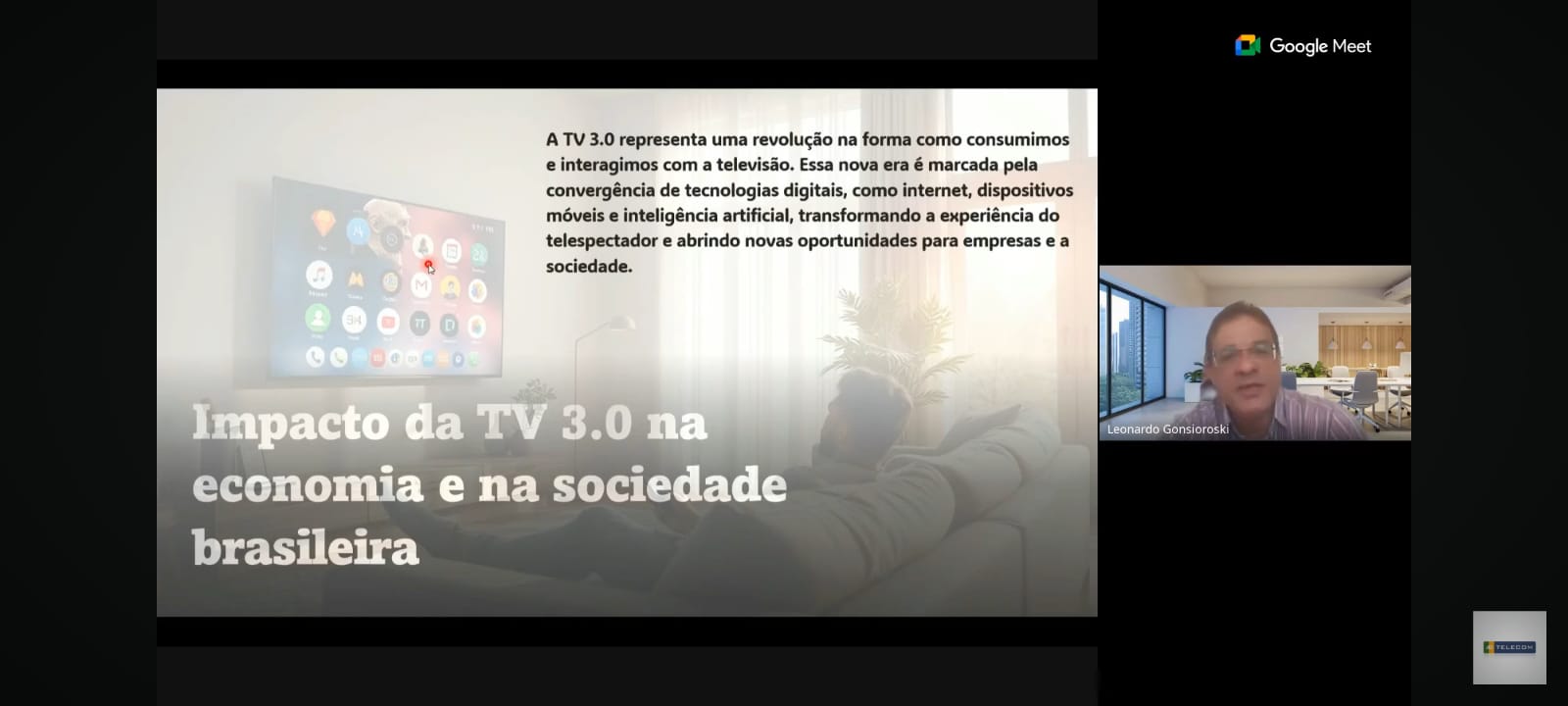
Para destacar essa celebração, a ABTELECOM realizou a live “A Engenharia por Trás da TV 3.0: Destaque no Dia Mundial das Telecomunicações”, apresentada pelo Engenheiro Eletricista Leonardo Gonsioroski. Mestre em Engenharia Nuclear pelo IME e doutor em Engenharia Elétrica/Telecom pela PUC-Rio, Gonsioroski é professor da UEMA e membro titular da Academia Maranhense de Ciências. Durante sua exposição, ele revelou os bastidores técnicos e os desafios da implantação da TV 3.0 no Brasil — uma revolução que promete tornar a televisão aberta mais digital, interativa e conectada ao futuro. A apresentação também destacou o papel estratégico das engenharias de telecomunicações, eletrônica e computação na transformação da experiência audiovisual e na promoção da inclusão digital em escala nacional.
ABTELECOM: Tradição e Inovação nas Telecomunicações
Desde 1947, a ABTELECOM atua no fomento do desenvolvimento técnico e científico das telecomunicações no Brasil. Como a associação nacional pioneira da área, sua missão é fortalecer a atuação dos profissionais do setor e incentivar o debate qualificado sobre os desafios e soluções em infraestrutura, conectividade e inovação.
A instituição firmou o compromisso de, a partir deste ano, realizar lives temáticas nos dias 5 e 17 de maio, transformando o mês de maio oficialmente no Mês das Telecomunicações. Essas ações visam conectar ainda mais os profissionais da área, disseminar conhecimento técnico e valorizar o papel da engenharia no desenvolvimento do país.
Assista às lives e acompanhe as próximas edições no canal oficial da ABTELECOM no YouTube:
https://www.youtube.com/@ab_telecom
Se você é engenheiro, estudante, pesquisador ou profissional da área de TICs, acompanhar essas iniciativas é essencial para se manter atualizado e engajado com os rumos da transformação digital no Brasil.

